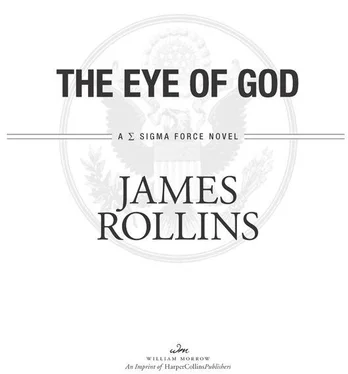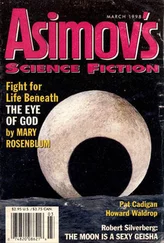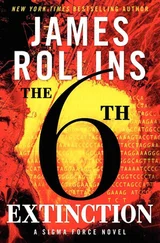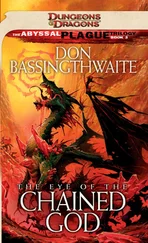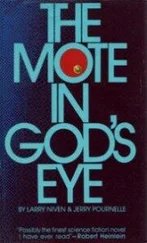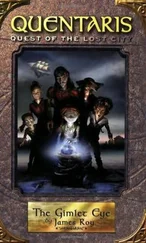“Like St. Thomas with his cross.”
“Possibly, but I’m not going to go around calling you St. Duncan.”
“Are you sure? I sort of like the sound of that.”
A small alarm chimed on her laptop, as a new folder popped onto her desktop screen. It was the latest update of data from the SMC, sent via satellite.
Finally . . .
“Back to work?” Duncan asked.
“There’s something I want to check.”
Tapping open the folder, she read through the documents. She planned on building a graph of the comet’s path, tracking its corona of dark energy. Something continued to nag at her, and she hoped more information would jar loose whatever was troubling her.
She began collating the pertinent information and plugging it into a graphing program. She also wanted to compare the latest statistics and numbers to her original equations explaining the nature of dark energy. Her equations beautifully married her theory concerning the source of dark energy—the collapse of virtual particles in the quantum foam of the universe—to the gravitational forces it created. She knew that was the crux of the problem at hand. She could summarize it in one word.
Attraction .
The virtual particles were drawn to each other, and the resulting energy of that annihilation was what imbued mass with the fundamental force of gravity . It was the fuel of weak and strong nuclear forces that drew together electrons, protons, and neutrons to form atoms. It was what made moons circle planets, solar systems churn, and galaxies spin.
As she worked, she began to note errors in the SMC’s equations, assumptions the head physicist had made that were not supported by this latest set of data. She began to work faster, sleep shedding off her shoulders. With growing horror, the truth began to materialize before her mind’s eye.
I have to be wrong . . . I must be.
Her fingers began furiously tapping, knowing a way to double-check.
“What’s wrong?” Duncan asked.
She wanted to voice it aloud, to share it, but she feared doing so would somehow make it more real.
“Jada?”
She finally folded. “The physicist back at the SMC, the one who did the initial estimates determining when we’d cross the point of no return . . . he made a mistake.”
“Are you sure?” Duncan looked at his watch. “He said we had sixteen hours. Which still leaves us about another nine hours.”
“He was wrong. He was basing his extrapolations on the fact that the comet’s gravitational anomalies were increasing in proportion to its approach toward the earth.”
“And he was wrong about that?”
“No, that part was right.” She tapped to bring up the graph she had been compiling earlier. “Here you can see the comet’s corona of dark energy being pulled earthward as it swings nearer, growing an ever longer reach.
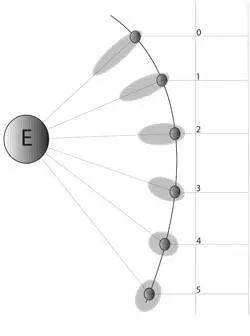
Jada continued, “Likewise, the curve of space-time around the earth is responding to that gravitational effect. That curvature is bending outward, the two drawing together, slowly creating that funnel down which that barrage of asteroids will tumble.”
“So if the physicist is right, what’s the problem?”
“He made an error, and I believe the new data supports it.”
“What error?”
“He assumed the growth of the gravitational effect was geometric, growing at a set incremental rate. But I don’t think it is. I think it’s increasing at an exponential rate.” She turned to him. “In other words, much faster.”
“How much faster?”
“I want to run the data through my equations to be certain, but right now I would say we have only five hours until an asteroid strike is inevitable. Not nine.”
“That’s almost half our remaining time.” Duncan leaned back into his seat, immediately understanding the problem. “We’ll be lucky to be touching down in L.A. by then.”
“And considering our past couple of days, I wouldn’t count on luck.”
4:14 A.M.
What the hell . . .
Duncan sat stunned.
Jada urged him to remain calm until she could confirm her estimates. To accomplish that, she was dumping data into an analysis program she had designed based on her equations.
As he waited, Duncan rubbed his temples with his fingers. “Why did that satellite have to crash in the middle of Mongolia of all places? Why not in freakin’ Iowa? We’re losing precious hours flying halfway around the globe.”
Jada’s fingers froze over the keyboard.
“What?” he asked.
“That’s it . . . that’s what was bugging me. I’ve been such a fool.” She closed her eyes. “It’s always been about attraction .”
“What do you mean?”
She pointed again to the graph showing the comet’s corona of energy being pulled toward the earth. “The physicist at the SMC theorized that there was something on the planet that the comet’s energy was responding to. And I agree.”
“You said before that you believed it might be the cross,” Duncan said. “Because it was sculpted out of a piece of that comet when it last appeared.”
“Exactly. The two—the comet and the cross—are most likely quantumly entangled and drawn to each other, at least energetically. I was hoping that if the cross was ever found, that by studying its energy—or even the energy of the Eye—I might find a way to break that entanglement.”
He nodded. It made theoretical sense. “And if you did that, the comet’s energy would no longer be attracted to the earth—and in turn, space-time around the planet would not warp toward it.”
“And the funnel would never form triggering the massive asteroid strike.”
Brilliant , Dr. Shaw.
“Two questions,” Duncan said. “ How can you be so sure of this attraction between the comet and the cross? And what can you do to break that entanglement?”
“The answer to both is the same. To quote Einstein again, God does not play dice with the world. ”
Jada read his baffled expression. “A moment ago,” she said, “you asked why did the satellite crash in Mongolia? That’s the best question anyone could ask.”
“Thanks . . . ?” he said tentatively.
“To answer it, I’ll ask you another question. Where do we currently believe the cross is hidden?”
“An island in Lake Baikal, about three hundred miles north . . .” Then he understood, his eyes widened. “From a global standpoint, practically in the backyard of where the satellite crashed.”
“And does that not strike you as wildly coincidental?”
He nodded.
And God does not play dice .
He stared at her, wanted to kiss her—more than he usually did. “The satellite fell in that general vicinity because it was drawn there, pulled by the energy of the cross.”
“How could it not? It’s charged with the same dark energy of the comet.”
Duncan glanced again to that graph showing the nimbus of energy being sucked earthward. He pictured the satellite as a disembodied piece of that energy, imagining it being tugged out of orbit by the pull of the cross and dragged down to the planet’s surface.
If true, that definitely supported Jada’s theory of entanglement, but it didn’t answer his other question.
He turned back to her. “You said this fact would also answer how to break this entanglement.”
She smiled. “I thought it was obvious.”
“Not to me.”
“We have to finish what the satellite tried to do. We have to unite the energy of the Eye and the energy of the cross. Think of the pair as a positively charged particle and a negatively charged particle. While their opposite charges draw them together—”
Читать дальше
